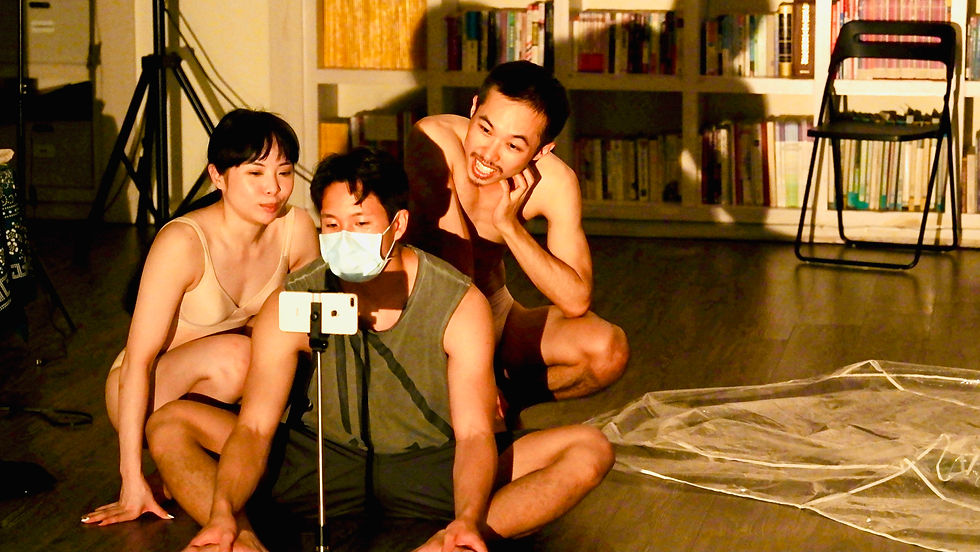Video Performance Try Out — Body, Clothing, Sex and Gender
- Chih Wei Tseng
- 2021年5月24日
- 讀畢需時 2 分鐘

Based on the discussion of Body, Clothing, Sex and Gender, we did the following experiments of video performance:
1. Body without Gender ( Body / Fabric of Aerial Silk ):
Totally covered by the fabric of aerial silk, the shape of body of the performer is partly hidden and partly visible between the fabric and the light. Sex characteristics are no longer being shown.

2. Yin and Yang ( Body / Clothing Ocean ):
Surfing on the piling clothing, the two performers are like ovum and sperm before their encounter. In a certain position, they look like Yin ( feminine / negative ) and Yang ( masculine / positive ) of Tai Chi.

3. Sex ( Body / Plastic Fabric ):
Covered by plastic fabric at the same time, the two performers are like man and woman having sex. “Sex” is the origin of all livings. They are also like unborn children in the womb.

4. Cross-Dressing ( Sex Characteristics / Gender of Clothing ):
First of all, sex characteristics are presented by the two almost naked performers. Then they each put on a male clothing and a female clothing in the traditional definition of gender. In the end, they cross-dress and even mix-dress the clothing with gender label.

5. Transvestic Fetishism ( Cross-Dressing / Sexual Arousal ):
The two performers discover the sensation of touch and the sexual arousal by putting on clothing in the traditional definition of the opposite gender. Meanwhile, a dialectic of self between body, clothing, sex and gender happens in the mirror, the camera and the moaning of the opposite gender outside the camera.

影像表演實驗-身體、衣物、性與性別
1. 無性別身體(身體/綢吊布):
綢吊布將表演者的身體完全包覆,身體的輪廓在布與光線之間若隱若現,使得身體的「性徵」不再顯而易見。
2. 陰與陽(身體/衣物海):
徜徉在成堆的衣物裡,兩位表演者如還未相遇的精子與卵子。呈現特定姿態時,又如太極的陰與陽。
3. 性(身體/塑膠布):
兩位表演者同時被包覆在塑膠布中,如性愛中的男女。而「性」是一切生命的來源,他們同時又如母體中的胎兒。
4. 異性扮裝(身體性徵/衣物性別):
首先,兩位表演者裸露的身體呈現了身體性徵,再分別穿上「傳統性別定義」的男裝與女裝,接著將這些帶有性別標籤的衣物混搭。
5. 戀物性異裝(異性扮裝/性慾):
表演者穿上「傳統性別定義的異性」的衣物,感受身體與衣物之間的觸覺,與其所激發的性慾。同時,在鏡子、鏡頭和鏡頭外另一個性別的呻吟聲,進行身體、衣物、性和性別的自我辯證。

影像提供單位|Thinkers' Studio 思劇團
攝影師|邱条影室/邱垂仁、梅芷菱、曾智偉、巴西




留言